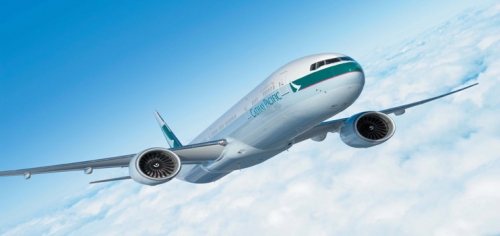Cathay Pacific, battling stiff competition from mainland Chinese and other airlines, has reported a $KH2.05- billion ($US262m) net loss for the first six months of 2017 and predicts the second half is likely to be just as bad.
The worse than expected loss compared to a net profit of $HK353 million for the first half of 2016. It came as passenger revenue slipped by 3.9 per cent despite the carrier marginally filling more seats on its planes.
Cathay said intense competition with other airlines was the most significant factor in the loss although it had also been affected by higher fuel prices, a falling Hong Kong dollar and higher aircraft maintenance costs.
The airline is battling competitors from the mainland and the Middle East on long-haul routes as well as budget airlines on shorter routes.
“We do not expect the operating environment in the second half of 2017 to improve materially,’’ Cathay chairman John Slosar said. “In particular, the passenger business will continue to be affected by strong competition from other airlines and our results are expected to be adversely affected by higher fuel prices and our fuel hedging positions.
“However, the outlook for the cargo business is good and we expect robust demand and growth in cargo capacity, yield and load factor in the second half of this year.”
Total fuel costs rose by a third to $HK2.9 billion and the airline said it was also hit by congestion at Hong Kong International Airport and air traffic control constraints in the Greater China region. It would be doing to improve operational reliability, it said.
A three-year restructuring program aimed at cutting costs and boosting returns is expected to produce some benefits in the second half and Slosar said he effects would accelerate in 2018.
“We are addressing the industry challenges through our corporate transformation and by expanding our route network, increasing frequencies on our most popular routes and buying more fuel-efficient aircraft,’’ he said.
“ This will help us to increase productivity and to reduce costs while improving the quality of our services to customers.’’
The result included a one-off gain of $HK244 due to changes in Cathay’s Air China shareholding and a $HK586m profit from the sale of its share of Travelsky Technology. There was also $HK224m in redundancy costs related to its decision last year to axe 600 staff and a $HK498m European Union fine related to freight price-fixing.
The airline’s passenger load factor was up 0.2 percentage points to 84.7 per cent but yield, a measure of average fares, fell 5.2 per cent in the face of strong competition and the weaker Hong Kong currency.
Cargo revenue improved 11.7 per cent compared to the first half of 2016 with load factor, tonnage and yield all up.
The airline took delivery of six Airbus A350-900s during the first half and another in July to bring its total A350 fleet to 17. It retired its final four A340-300 aircraft and one Boeing 747 freighter but wet leased two B747-8 freighters. It expects to take another five A350s in the second half.
The Hong Kong carrier introduced services to Tel Aviv and seasonal services to Barcelona in July while increasing flight frequencies to a number of ports.
























